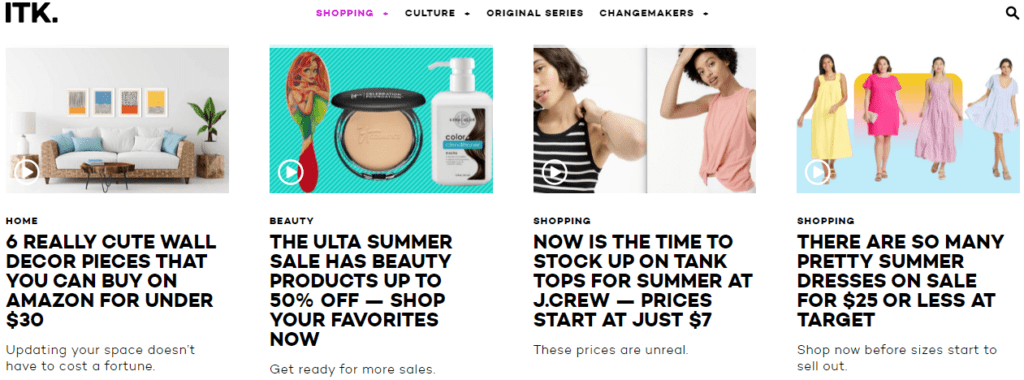|
Getting your Trinity Audio player ready...
|
Why media companies need to put social media at the center of their content and distribution strategies
The attention and support of younger readers is critical for the survival and sustained growth of publishers. However, “the millennial audience strategy honed over the better part of a decade will not work on Gen Z (born between 1997 to 2012)” says Kayleigh Barber, Senior Reporter, Digiday. This is because their media consumption habits are vastly different from the preceding generations.
57% of Gen Zers’ first interaction with news is on social media
“Despite being a significant portion and growing force on the internet for over a decade now Gen Z remains an enigma for many media companies and brands,” writes Barber in a recently published Digiday guide, “Everything you need to know about Gen Z’s media consumption habits.” It offers a comprehensive look at Gen Zers’ media consumption habits and shares actionable insights for publishers and marketers.
Whether or not Gen Z is currently a target demographic in your business strategy, creating a positive connection with this generation and beginning to build brand affinity now is important to ensure the longevity of your brand or publication in a decade or two down the road.
Kayleigh Barber, Author, Everything you need to know about Gen Z’s media consumption habits
41% of US adults, including both young millennials and Gen Zers (18-29 years), say they primarily get their political news from social media, according to a Pew research study of more than 12,000 individuals. A 2019 Reuters Institute study had 57% of Gen Zers reporting that their first interaction with news in the morning is on social media platforms and messaging apps.
Brie D’Elia, 20, a fashion student who is building her personal brand on TikTok, tells Barber that Twitter is her go-to platform for news. “When I want a specific trending piece of information, I always go there because you can see the hashtags and what’s going viral. I just want that [information] fast,” she says.
“Social media at the center of their content and distribution strategies”
Publishers targeting Gen Z “have put social media at the center of their content and distribution strategies,” Barber writes. They include Group Nine, Yahoo’s In the Know and Overtime. Legacy publications including The Washington Post have embraced newer platforms like TikTok, frequented by Gen Z. Video is critical for engaging this generation and the Post’s success with TikTok offers valuable lessons for other publishers.
The unique thing about Gen Z is that while millennials have grown up with social media, Gen Z has grown up with video-first social media.
Nick Cicero, VP of Strategy, Conviva
Dave Jorgenson, video producer for the Post, has been creating content for the platform since 2019. His often quirky videos tailored for TikTok have helped the publisher notch 1M followers and 40M likes on the platform. It looks at TikTok as a tool for building relationships with younger readers.
“With our focus on reader revenue at the bottom of the funnel, loyalty is incredibly important to us. But in order to get to a place of loyalty, it starts with a relationship at the top of the funnel,” says Kat Downs Mulder, Managing Editor at the Post.
A lot of what we’re doing is exposing people to The Washington Post [and] getting them to start to develop that affinity to trust in our brand.
Kat Downs Mulder, Managing Editor, The Washington Post
“Inherently a publisher that talks to Gen Z is going to have positive things to say about climate change, and pushing innovation and progression,” Clair Bergam, Associate Media Director, Media Kitchen told Digiday earlier this year. “Brands generally are realizing that they have to get behind these larger social issues or they will quickly become irrelevant.”
In the Know was launched to produce evergreen video content for younger audiences across Yahoo’s suite of sites and channels. It became popular enough to get its standalone site in February 2020. The site notched 25M monthly unique visitors in March, according to Comscore.
The brand had also been experimenting with affiliate shopping since 2019 and moved on to producing shoppable video. It’s gross merchandise value increased by 125% over the past year, according to Andrea Wasserman, Head of Global Commerce, Verizon Media.

The brand also uses Instagram, Snapchat and Facebook to distribute its videos. A single video on Snapchat is able to drive over 1M unique views from the 13-to-24 years group, Wasserman tells Barber.
“Consumption behavior is driving them towards these platforms”
Digital video sports publisher Overtime has reached 16.6M followers on its main TikTok account—it joined in March of 2019. The publisher has also achieved over 1B likes across the 2,000-plus videos it’s posted during this period. It has 5M followers on Instagram and 3M subscribers to its Snapchat show Overtime Now.
The publisher’s distributed content strategy across social media platforms has been its bread and butter since its launch in 2016, according to its CRO Rich Calacci. “Quite frankly, we don’t see that changing,” he says. “That’s going to be a very critical part of our growth and development, especially as it relates to Gen Z and millennials.”
Gen Z’s “consumption behavior is driving them towards these platforms and it’s creating digital daily habits, and those digital daily habits are where we want to be.”
Rich Calacci, CRO, Overtime
The full guide is available here:
Everything you need to know about Gen Z’s media consumption habits



